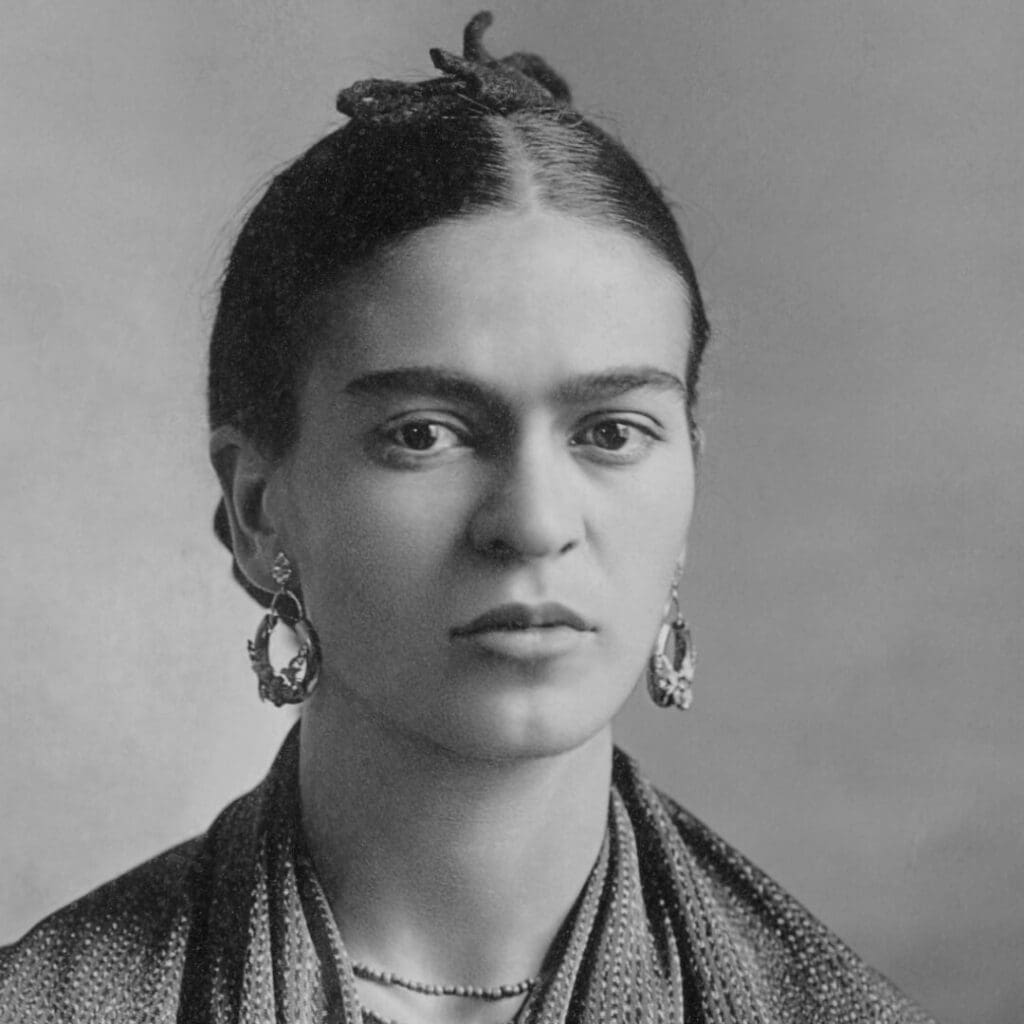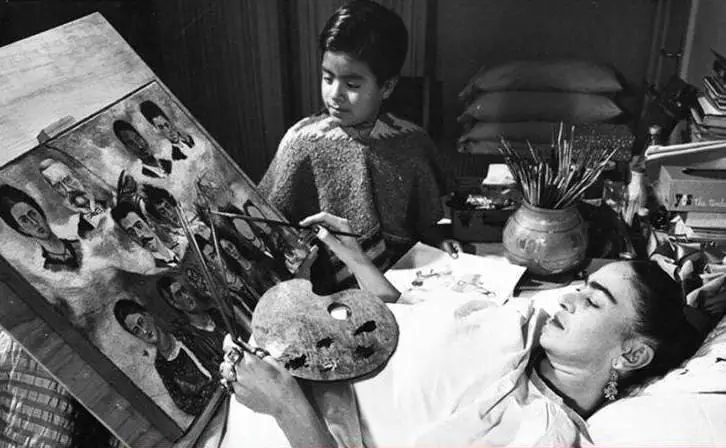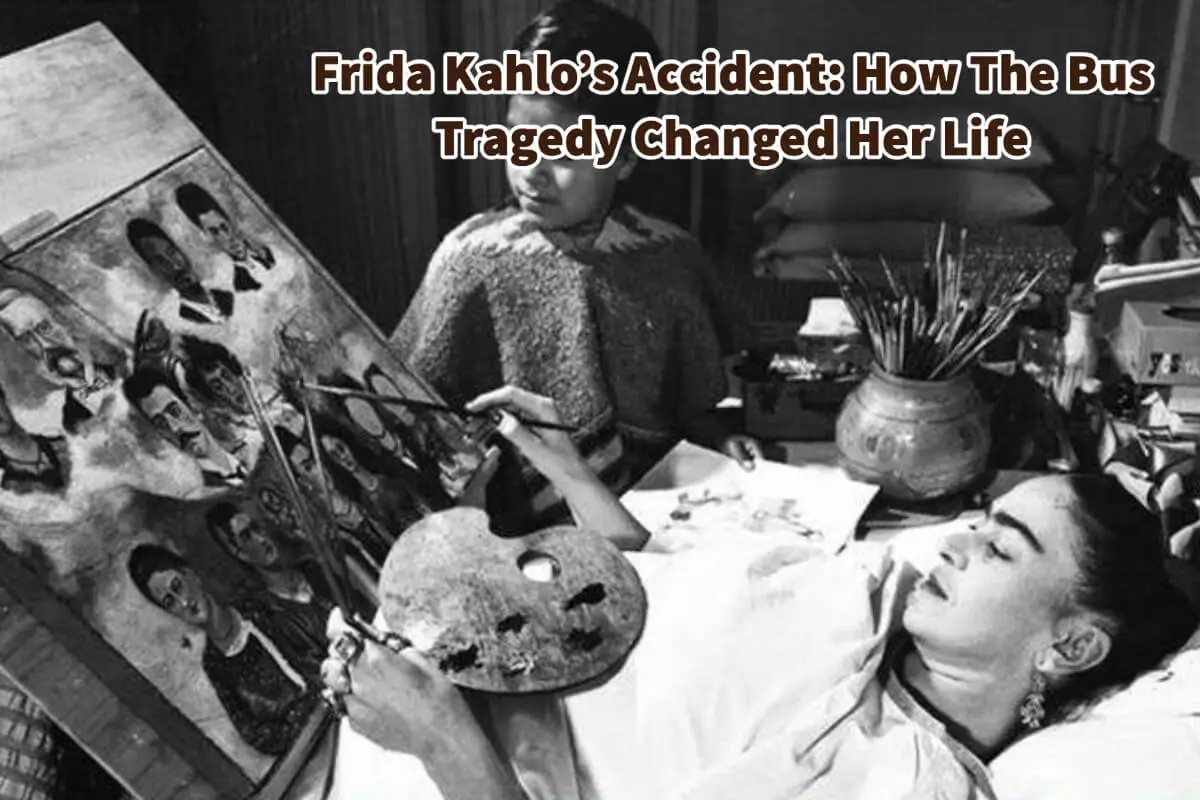Frida Kahlo, a name that resonates with art enthusiasts and admirers worldwide, is an iconic figure renowned for her mesmerizing and emotionally charged artwork. But behind the beautiful canvases lies a life of resilience and an unwavering spirit.
At age 18, on the verge of fulfilling her dreams of becoming a doctor, Kahlo’s path took an unforeseen and tumultuous turn. September 17, 1925, marked the fateful day when a bus accident forever changed the trajectory of her existence, leaving her with profound physical and emotional scars. Little did she know that this transformative event would ignite the flame of her artistic journey, infusing her creations with an unparalleled depth and forging a unique and memorable art style that would captivate the world.
Table of Contents
- Frida Kahlo’s Bus Accident: A Life-Altering Event That Shaped An Extraordinary Artist
- Frida Kahlo – The Fateful Encounter And The Life-Changing Bus Accident
- The Long Road To Recovery For Frida Kahlo
- The Emergence Of Art As A Cathartic Outlet After The Accident
- Frida Kahlo: The Transformative Power Of Self-Expression Through Art
- Frida Kahlo’s Exploration Of Identity And Culture Through Art
- Frida Kahlo’s Legacy And Influence And Art
- Frida Kahlo’s Bus Accident Was A Pivotal Moment Of Her Life
- Related Questions
Frida Kahlo’s Bus Accident: A Life-Altering Event That Shaped An Extraordinary Artist
Frida Kahlo, renowned for her captivating and emotionally charged artwork, led a life of resilience and determination.

At 18, while on the precipice of fulfilling her dream of becoming a doctor, Kahlo’s life took an unexpected turn. The bus accident she endured on September 17, 1925, forever altered the course of her existence, leaving her with severe physical and emotional scars.
However, this transformative event catalyzed Kahlo’s artistic journey, imbuing her work with profound meaning and forging her unique artistic style. Read on as we will delve into the details of Kahlo’s bus accident and explore how it shaped her life and contributed to her remarkable artistic legacy.
Frida Kahlo – The Fateful Encounter And The Life-Changing Bus Accident
On that fateful day in 1925, after attending classes at the National Preparatory School in Mexico City, Frida Kahlo boarded a bus bound for her hometown of Coyoacan, accompanied by her friend Alejandro Gomez Arias. Little did she know that this seemingly routine journey would forever change the trajectory of her life.

As the bus turned a corner, a collision with an electric trolley car ensued, resulting in a slow and crushing impact that left everyone on board injured, with Kahlo bearing the brunt of the damage.
The Long Road To Recovery For Frida Kahlo
The bus accident inflicted severe physical injuries upon Kahlo, leaving her bedridden and isolated for an extended period. Her spine, collarbone, ribs, and pelvis were fractured, and she endured multiple surgeries and a lengthy period of immobilization.
Throughout this arduous journey to recovery, Kahlo’s unwavering spirit and determination began to manifest in her artistic pursuits.
The Emergence Of Art As A Cathartic Outlet After The Accident
While confined to her bed and starved of human contact, Kahlo sought solace and a means of self-expression through art. Her isolation became a fertile ground for creative exploration, leading her to pick up a paintbrush and channel her experiences onto the canvas.
The accident forced Kahlo to confront the depths of her physical and emotional pain, and she found a voice within her art that allowed her to transcend her suffering.
Frida Kahlo: The Transformative Power Of Self-Expression Through Art
As Kahlo’s body healed, her artistic voice grew more robust, and her paintings became a medium for storytelling, allowing her to convey her deeply personal experiences. Through her art, Kahlo fearlessly confronted themes of pain, suffering, identity, and femininity.

She did not shy away from depicting her physical and emotional scars, offering an unflinching portrayal of her reality. Her work became a testament to her resilience and an affirmation of the human spirit’s ability to endure and find beauty in the face of adversity.
Frida Kahlo’s Exploration Of Identity And Culture Through Art
Kahlo’s accident also catalyzed her exploration of her Mexican heritage and identity. Immersed in pain and introspection, she delved into her indigenous roots and Mexican folk culture, integrating symbolic imagery and vibrant colors into her artwork.
Kahlo’s art became a reflection of her personal experiences and a celebration of her Mexican identity, allowing her to connect with her roots and become a symbol of national pride.
Frida Kahlo’s Legacy And Influence And Art
Frida Kahlo’s bus accident was a defining moment in her life that shaped her artistic journey and made her the iconic figure we remember today. Her paintings continue to captivate audiences worldwide, and her story resonates deeply with individuals navigating their trials and tribulations.
Kahlo’s unapologetic honesty, resilience, and unwavering determination inspire artists and non-artists to embrace their authentic selves and find strength in vulnerability. Kahlo’s impact extends far beyond the realm of art.
Her story has become a symbol of empowerment, especially for women and individuals facing adversity. By openly expressing her physical and emotional pain, Kahlo shattered societal norms and challenged the traditional perception of women in art.
She paved the way for future artists to embrace their narratives and use art for self-exploration and empowerment. Kahlo’s artwork has had a lasting influence on the art world. Her unique style, characterized by vivid colors, intricate symbolism, and surreal elements, has inspired countless artists and continues to be celebrated today.
She blazed a trail for the Surrealist movement and contributed to the broader conversation surrounding identity, gender, and the human experience.
Frida Kahlo And Popular Culture
In recent years, Kahlo’s legacy has expanded beyond the art world into popular culture. Her image adorns merchandise, fashion collections, and even murals, further solidifying her status as an enduring cultural icon.
However, it is essential to recognize that her impact reaches far beyond commercialization. Kahlo’s art speaks to the universal human experience of pain, resilience, and self-discovery, making her a beloved figure transcending time and cultural boundaries.
Frida Kahlo’s Bus Accident Was A Pivotal Moment Of Her Life
Frida Kahlo’s bus accident was a pivotal moment in her life, catapulting her into a journey of self-discovery, healing, and artistic expression. The physical and emotional scars left by the accident became the driving force behind her remarkable body of work.

Through her paintings, Kahlo fearlessly confronted her pain, shared her unique perspective on identity and culture, and left an indelible mark on the art world.
Her story is a powerful reminder of art’s transformative power and the human spirit’s resilience. Frida Kahlo’s ability to transform her tragedy into profound works of art resonates with audiences worldwide, inspiring countless individuals to embrace their stories and find strength in vulnerability.
She remains an enduring symbol of authenticity, courage, and artistic brilliance, reminding us that beauty and meaning can be found even in adversity.
Anita Louise Art is dedicated to art education, great artists, and inspiring others to find and create their art. We love art that uplifts and inspires. #ArtToMakeYouSmile! #ArtToMakeYouHappy!
If you want to see any of my art, you can find out more by clicking here. If you are interested in what inspires me and my paintings, you can discover more by clicking here.
We have a free newsletter and would love you to be part of our community; you can subscribe to the newsletter by clicking here. If you have any questions, I would be happy to talk to you anytime. You can reach me, Anita, by clicking here.
Subscribe to our Anita Louise Art YouTube Channel with great videos and information by clicking here.
Join us for our podcast “5 Minutes With Art.”Spend 5 minutes a week with us to discover and learn about great art and artists. You can find out more about our podcast by clicking here.
Related Questions
Why Was Impressionism Art At First Rejected?
During the emergence of impressionism art, fine-art oil painting was an essential addition to the interior design of a home, especially for the affluent and the increasing arrival of the middle classes. For these art patrons, only some art styles were considered acceptable for them to use for the interior design of their home, and impressionism art did not fit into any of these culturally acceptable fine art categories.
By clicking here, you can learn more by reading Why Was Impressionism Art at First Rejected?.
Why Is Van Gogh Considered Such A Great Artist?
Many things make Vincent Van Gogh unique and great as an artist. He had a great way of using color in his art, but more than that, he was an artist who set and paved the way for other artists. He changed art with his brushstroke technique, how he used color, and his design abilities. Van Gogh did all this as a self-taught artist.
By clicking here, you can learn more by reading Why Is Van Gogh Considered Such A Great Artist?.
What Art Tools Did Vincent Van Gogh Use?
Vincent Van Gogh used most of the essential tools that artists of his day used, such as oil paints, turpentine, oil, canvas, brushes, palette knife, and easel. We learn from some of his letters how he used these art tools for his paintings. We also know from the letters how essential these art tools were to him.
By clicking here, you can learn more by reading What Art Tools Did Vincent Van Gogh Use?.

